 "/>
"/>
 "/>
"/>

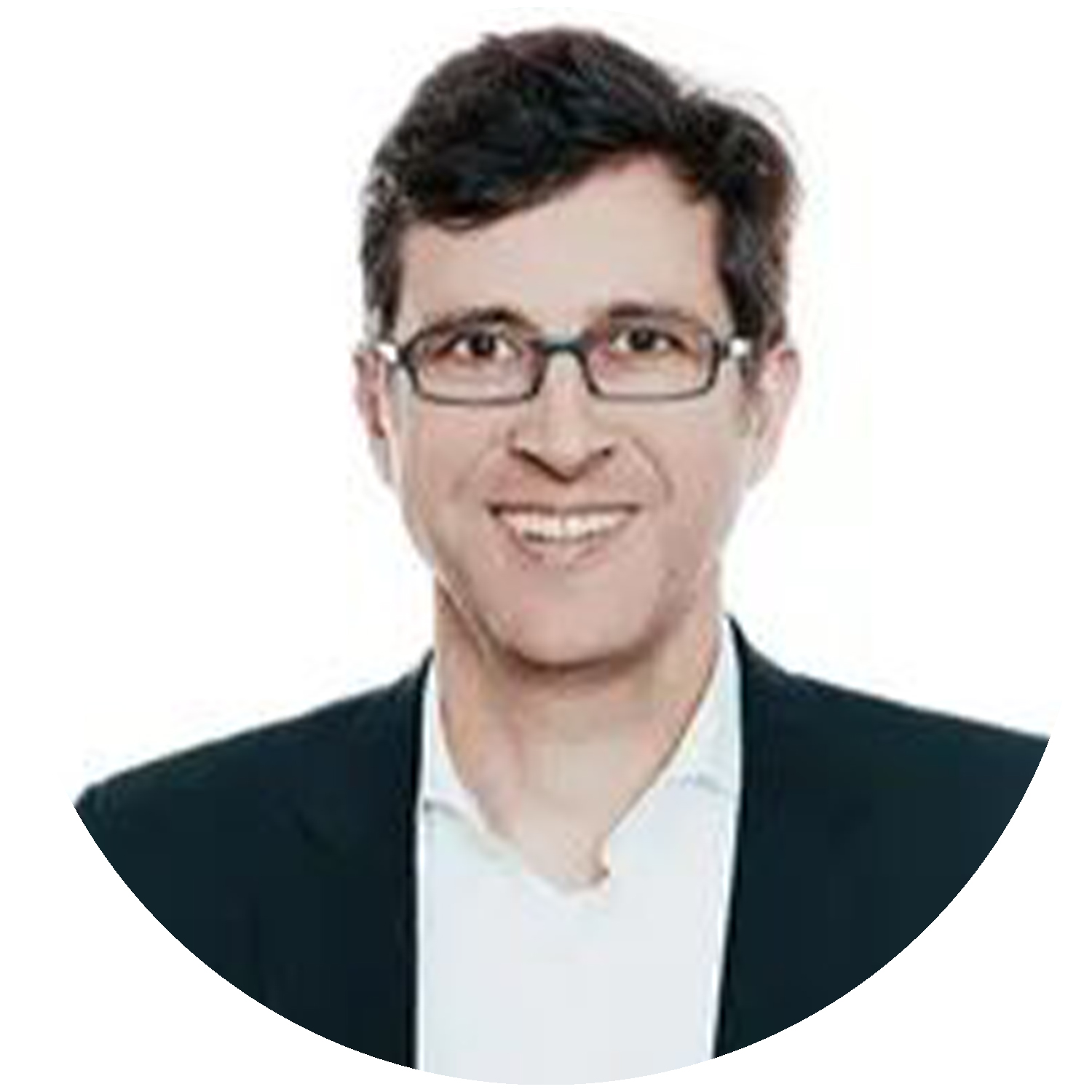
彦思·库|Jens Kump
德国HPP建筑事务所 合伙人
HPP Partner
ArchiDogs x CADE2020
CADE建筑设计博览会以“助力建筑师实现自我表达”为宗旨,是亚太区首个专注打造高端建筑系统解决方案与高品质建筑师交流平台为宗旨的平台。创办于2014年的BCC国际建筑科技大会(BAU Congress China),作为CADE建筑设计博览会的重要同期活动之一,定位于“交流全球先进建筑理念和案例”,在中国乃至亚洲建筑设计界享有盛誉。6年来,来自全球几十个国家的近150位全球顶尖设计大师齐聚在BCC上进行最新建筑理念的碰撞和探讨。为中国建筑业面临的建筑质量、节能、可持续性发展、城市改造等诸多问题提供全新思路。
今年BCC大会邀请到了二十余位来自全球各国建筑事务所的在华主理人、建筑大师和专家学者。围绕城市发展之近期项目、TOD、韧性建筑、未来生活和工作方式、数字化设计与人工智能在建筑中的应用五个议题展开为期三天的主旨演讲和精彩讨论。
ArchiDogs建道筑格作为CADE建筑设计博览会的深度合作伙伴,深度采访了BCC的几位与会嘉宾,和他们一起聊聊设计背后的故事。
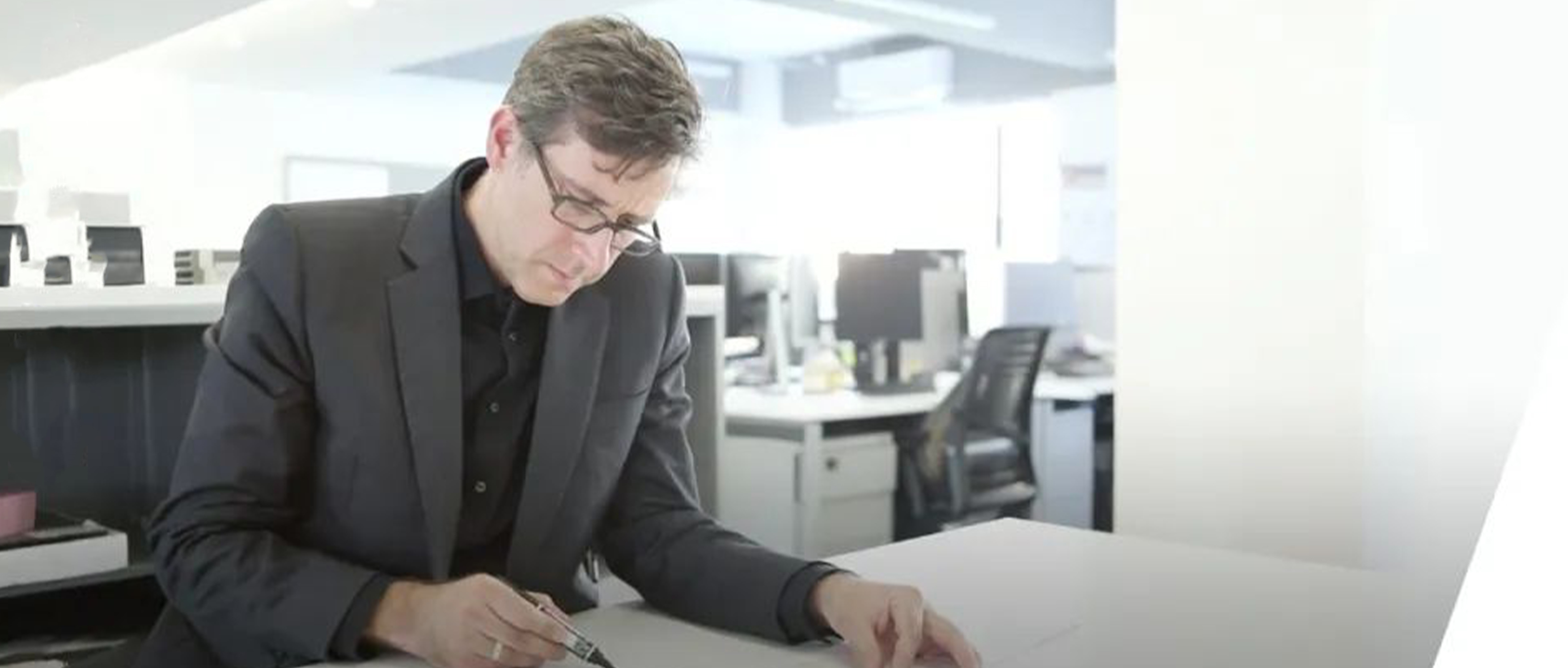
HPP是一个有着87年历史的德国老牌建筑事务所,这乍听起来可能以为它很传统刻板,然而当走进HPP上海办公室,与中国区合伙人Jens轻松对谈之后,我们看到的是一个深深扎根于中国市场的匠心团队。他们的超前设计意识不仅仅在满足当下中国业主的现实需求,同时也在不断挑战和预判未来中国市场的需求变化和发展的可能性,无论是积极推动全BIM项目管理,预判体育场馆的未来发展功能,亦或是为影视基地预估未来可能的空间需求,HPP都在不断致力于为中国建筑提供更加可持续性的全生命周期生命力。
在Jens看来,形容德国人的“严谨、理性与专注技术”可以同样与中国人的性格完美结合。让我们通过与Jens的深入访谈来,了解HPP中国的成长趣事和与众不同之处。
01
将国际思想融入中国文化
Jens Kump at HPP
█ 您最初在德国办公室工作,怎样的契机下选择来到中国,在上海创建HPP在中国的第一个分公司?
J:我上中学时,中国一直是西方世界关注的焦点, 我个人也对中国充满了好奇。HPP早期做的世博村是一个非常具有挑战性的项目,当时我被它的效果图所惊艳,于是在2006年决定来中国实地参与该项目。那个时期,HPP在中国建设中的还有另外两个项目——青浦皇冠假日酒店和汉高亚太总部。正因为这三个项目,HPP在中国的第一个分公司应运而生,落地上海。
In what opportunity and situation did you decide to come to China to set up the first office in Shanghai?
J:Personally, I was curious about China because it was the focus of interest in the western world when I was in my secondary school education already. What was calling me kind of was the design of the Expo Villages in 2005 and 2006.
When I saw the renderings, I was so fascinated that I decided to come to China to help plan the project. The Expo Village was a very challenging project. At that moment, we were also working on two other projects, the Qingpu Crowne Plaza Hotel and the Henkel Headquarter Asia Pacific. At that time, the partnership made the decision to come here and establish a permanent team. We came with three people from Germany to China, including me.
█ 从德国到中国,在多年的实践过程中,您是如何带领团队实现跨文化的设计实践?
J:我们在中国进行设计实践时,与业主相互之间保持好奇心,并以开放的心态共同克服问题。我们都希望用设计将大家团结在一起。业主对我们的跨文化设计感到新奇,这与我们是否是外国人无关,而在于我们如何为业主更好的服务、顺利合作。合作是一种生存方法,也更能让我们在工作中将国际思想融入中国文化。在中国,我们与业主彼此相互依赖,合作关系更加紧密。
事实上,我发现与我们的业主可以更专业地解决问题,他们更具前瞻性。有时候,业主喜欢尝试和挑战新想法, 我们也愿意为其提供更多的选择。
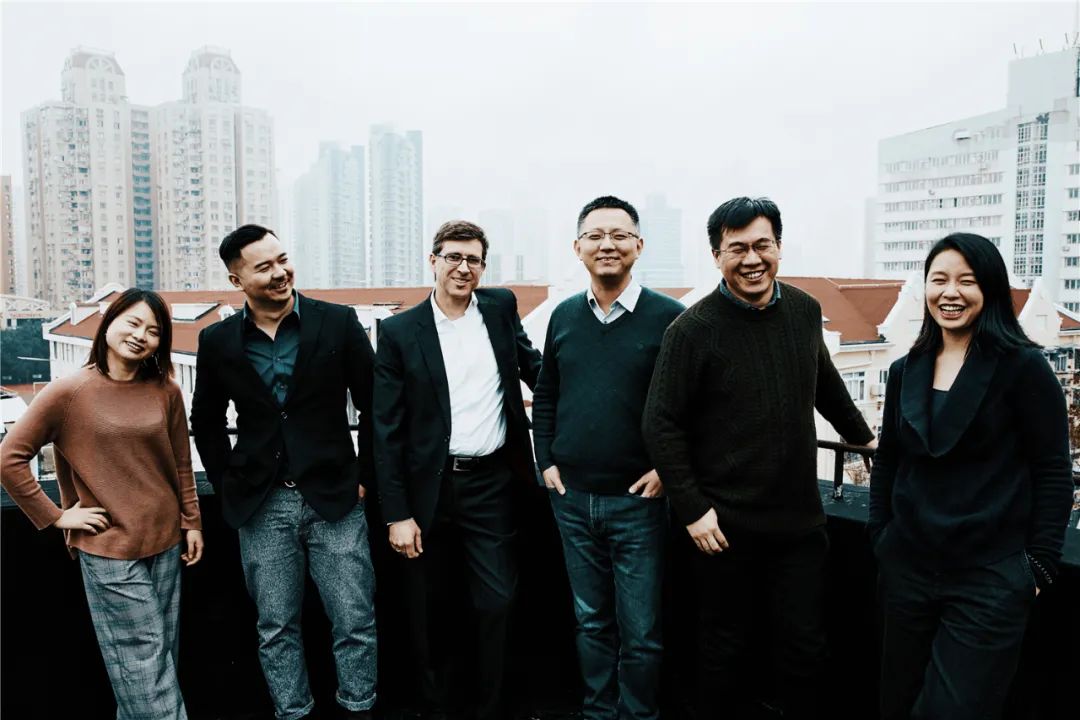
Jens与设计团队
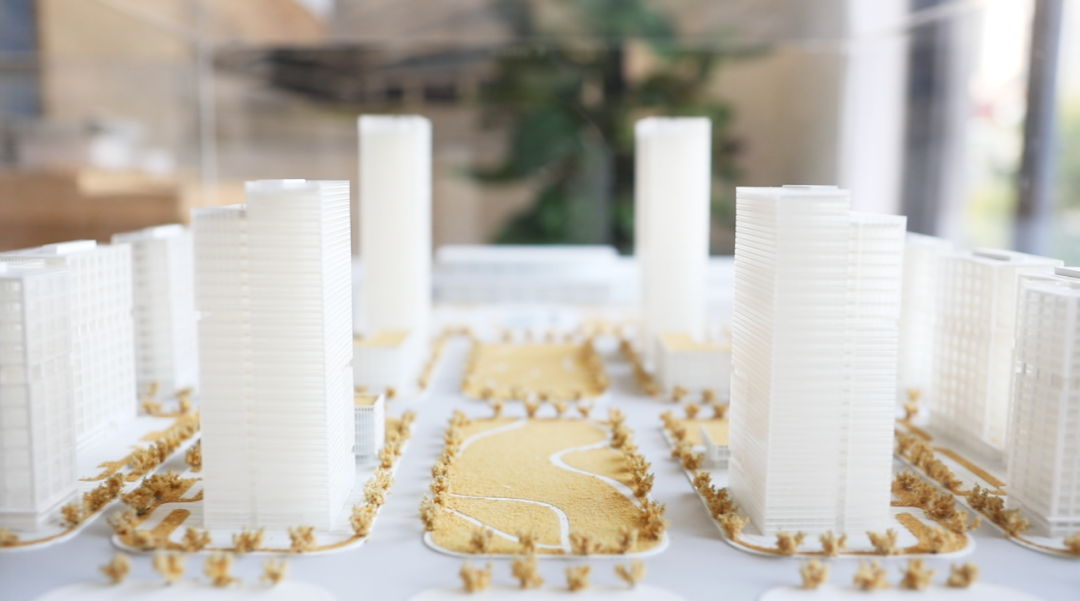
HPP上海办公室模型展示 ©CADE
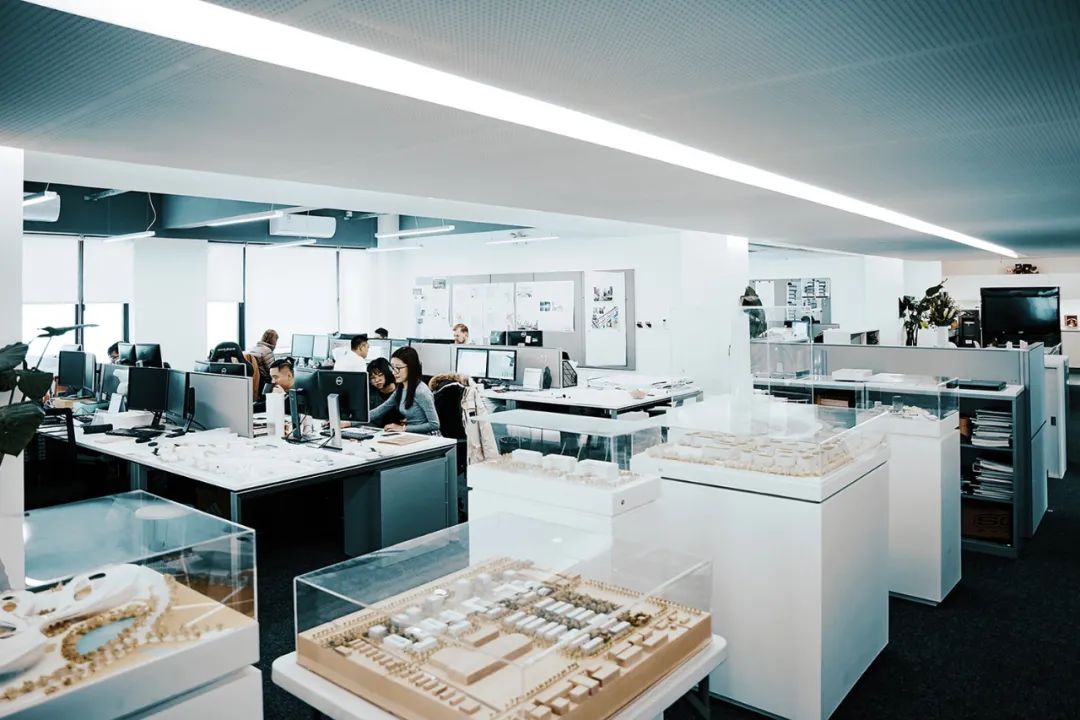
HPP办公室环境
Do you found any challenges in terms of leading a team with cultural differences between colleagues? And how do you overcome it? How do you lead the design practice in Chinese culture?
J:We must have a certain curiosity about each other and have an open mind to overcome certain problems if there are any problems. Clients find us exotic and are curious about our straightforward thinking about our design. In the end, it is not about if you have a longer face or blue eyes, it's about then how you distribute your service to local clients who were at the beginning curious about you, but at the end want a fluent service. That's why we integrate our foreign thinking into Chinese culture. In China, we are depending very much on each other and that brings us very close to each other.
I observe that the clients working with us are nowadays much more professional, forward-thinking. Still, clients like to try new ideas. And we are in that service attitude of making extra rounds and options.
█ 如何将德国设计理念(比如:德国制造Made In Germany严谨、技术等风格)结合中国地域特点、传统文化与大众审美?
J:中德两国的特点非常相似。正如刚才所说的德国设计理念,我一直认为这些也很“中国”。因此,我们能把彼此的文化和特色结合得很好。两国的工匠精神我都很喜欢。对于设计师而言,大家交换想法、教学相长,更有利于取得一个健康的平衡与成长。
How to combine the German design method (made in Germany, preciseness, cutting edge technologies, etc.) to the domestic Chinese features, local cultures, and popular aesthetic?
J:What you just described as German, I always thought it is very “Chinese”. So we are very much alike, and we combine quite well with each other. I like the engineering spirit of both. Somehow this mindset is having a similarity. There is a healthy balance. We like to bring our ideas, roots, and behavior to the team.
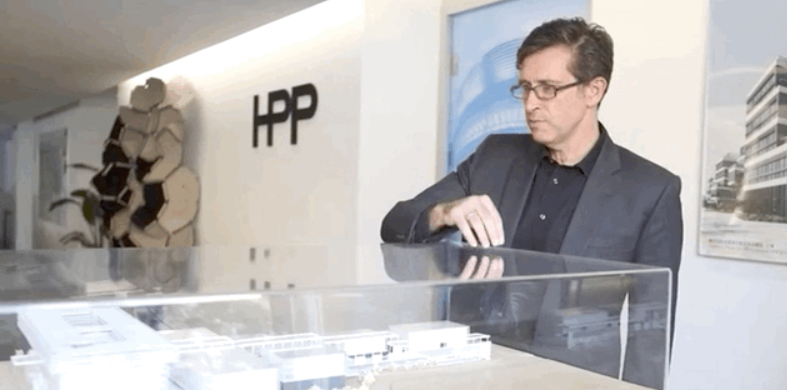
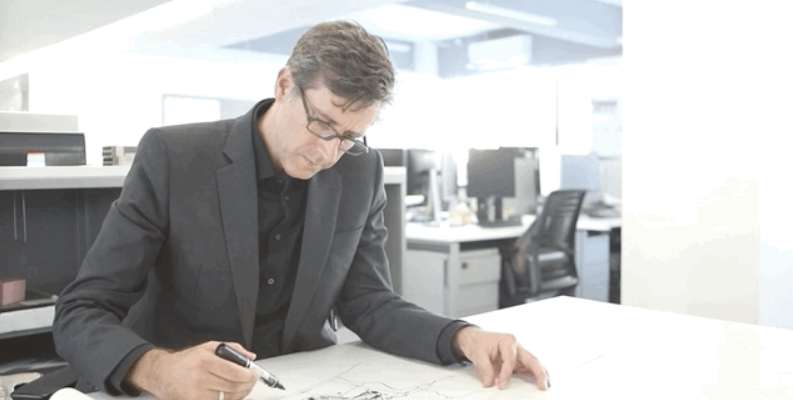
Jen在HPP上海办公室采访现场 ©CADE
02
全球项目实践:从德国到中国
Global Practice - From Germany to China
█ HPP在全球范围内有各种规模的项目,是否存在某种特定的设计风格?
J:我们不会给自己的设计定一个风格,HPP是德国最大最成功的合伙人制公司,我们有17位合伙人,大家自由的交流知识、想法、作品,希望在既有条件下为每位业主量身打造高质量的设计方案。
我们希望成为现代建筑设计的一流品牌,也在不断挑战与创新。例如,我们使用竹子这种在欧洲完全不为人所知的材料,也会尝试在欧洲孕育并推动新建筑哲学“Cradle to Cradle” (从摇篮到摇篮)计划——在建造中考虑建筑的一些基本部件和结构元素可以在若干年后重复使用,并不对环境造成任何污染。我们也相信在中国,未来十年,建筑的全生命周期将是一个非常有趣的话题。
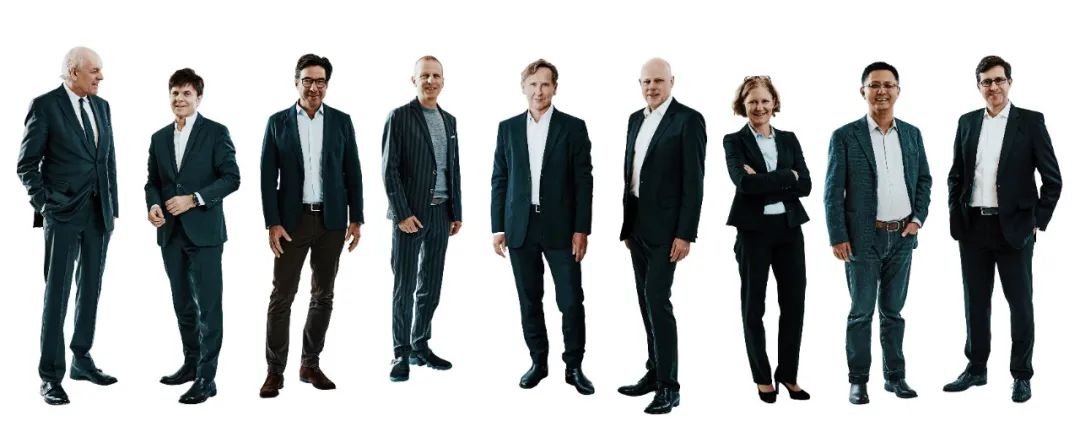
HPP 2020
左起: Joachim H. Faust, Gerhard G. Feldmeyer, Volker Weuthen, Werner Sübai, Remigiusz Otrzonsek, Burkhard Junker, Claudia Berger-Koch, 余炜, Jens Kump
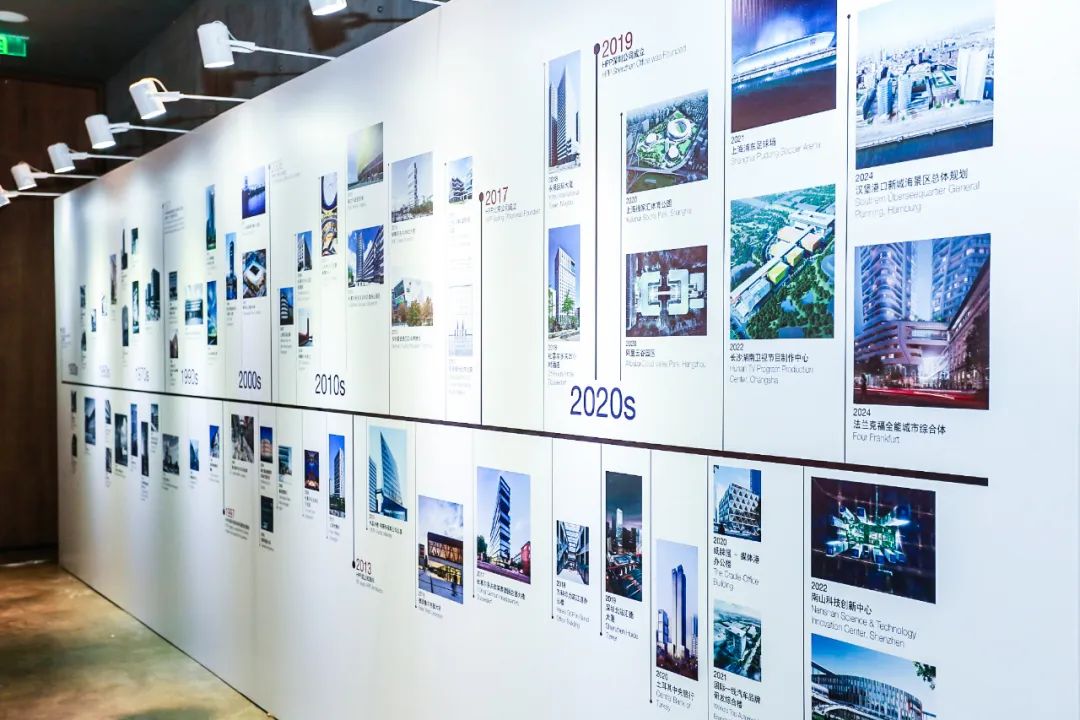
HPP历年项目展示墙
HPP has a lot of projects all over the world in different scales and programs. Are there any specific HPP design principles or styles that would present in those projects?
J: You will find us proud that there are no elements from us that will be repeated or redone. We enjoy creating quality for individual clients in individual circumstances. Tailor-made. Without any dogmatic background, we are partner organizations of around 17 active partners exchanging their knowledge, exchanging their ideas, and influencing tastes.
We want to serve in the first line of modern nowadays architecture. We like to take first-time challenges. For example, we liked to prototype buildings made of bamboo, a totally unknown material to Europe. We like the new philosophy in Europe called “Cradle to Cradle”, which means that some of the elementary parts and structural elements of buildings can be reused. We also think it might be a very interesting topic in China to think about the whole life span as human life in the next few decades.
█ 在设计过程中,HPP如何在项目的概念性与可实施性中找到平衡点?中国业主通常会带给建筑师非常实际现实的诉求。您如何推销更加可持续化的建造策略,使业主愿意接受?
J:我们愿意了解业主的需求。这不仅是建筑设计的一部分,也是从为他人设计服务中获得享受。我们不是为自己,而是为社会设计与建造,为有特定需求的人而努力。所以,我不认为是在向甲方“推销”设计概念,恰恰相反,我们希望业主能够从HPP在其他国家和地区的成功经验中受益。
During the design process, how does HPP balance between concept and feasibility? Clients and positional Chinese clients when they approach architect, they often have very practical demands and practical needs for a building, how do you push the boundary and encourage them to consider to be more sustainable?
J:We like to know clients' demands. This is a part of the architecture service. We are not building for ourselves but building for society. We're building for people who have certain needs, and we want to filter out and meet their needs to help them give birth to a useful infrastructure piece—a beautiful piece of real estate. So, I would not say that we are selling those ideas. And we would like interested clients to benefit from our experience.
█ 许多中国的项目都是通过竞赛竞标获得的,HPP如何常常能拿出一击必中的方案?在方案策划阶段,HPP会最关心哪一方面的把控和表达?
J:我是不会告诉你我们的“秘密” 的(笑)。我认为最好的设计是能够完美契合功能的,我们通过功能分析,试图让功能走到前台,成为建筑设计的本质。如果这种方式行之有效且富有诗意,那么它已经足够强大和富有故事性。当然,我们也希望从审美角度探索各式各样优美的建筑形式, 但是永远不会忘记功能的关键性——这才是建筑的灵魂。
Many Chinese projects require to participate in the bidding and competition process, what are HPP’ secrete to keep winning the client’s heart? Is there any particular emphasis HPP would pay attention to during each competition challenges? Can you share some experience and lessons you think is worth sharing?
J:The strongest design point is if you fit exactly to the function. We have a lot of functional analysis. We try to let the function come to the foreground and be the essence of the design and architecture. If this works well and works poetically, it is already strong and storytelling. Of course, we also like to play with forms in an aesthetic way, but never forget the key to functionality. That should be the soul of every building.
█ HPP在上海有两个体育场馆类项目, 在欧洲也有比较成熟的该类型项目的设计经验。在为中国体育场馆设计的过程中, 有哪些独特的需求和体验? 如何处理设计中的挑战?
J:我们已经为德国和波兰的10个主要足球俱乐部设计过场馆。国外的足球俱乐部通常有着悠久的历史,他们有的可能开始很不起眼,但随着多年来球队的不断发展,球场会被建造的越来越大。在德国,体育场对俱乐部的意义如同身体器官对人的意义。
但在德国很少有体育场会像中国那样是一个大型综合体。中国的场馆建设速度更快,有时甚至没有足球俱乐部的参与,也不需要代表球队,更多的是具有一定的象征意义,这样看似更容易去设计建造,但是随之而来的问题是因为缺少实际使用者的决策而容易使体育场缺失灵魂。因此,需要通过我们的经验预见业主和城市在未来全面启用场馆时的特殊需求。这是投资者和决策者的区别,因为中国的业主是体育场的投资者,他们与俱乐部的运营没有直接的关系。从某种程度上来说,我们有足够的经验成为决策者的桥梁,帮助他们为今后的发展做出合理的决策。

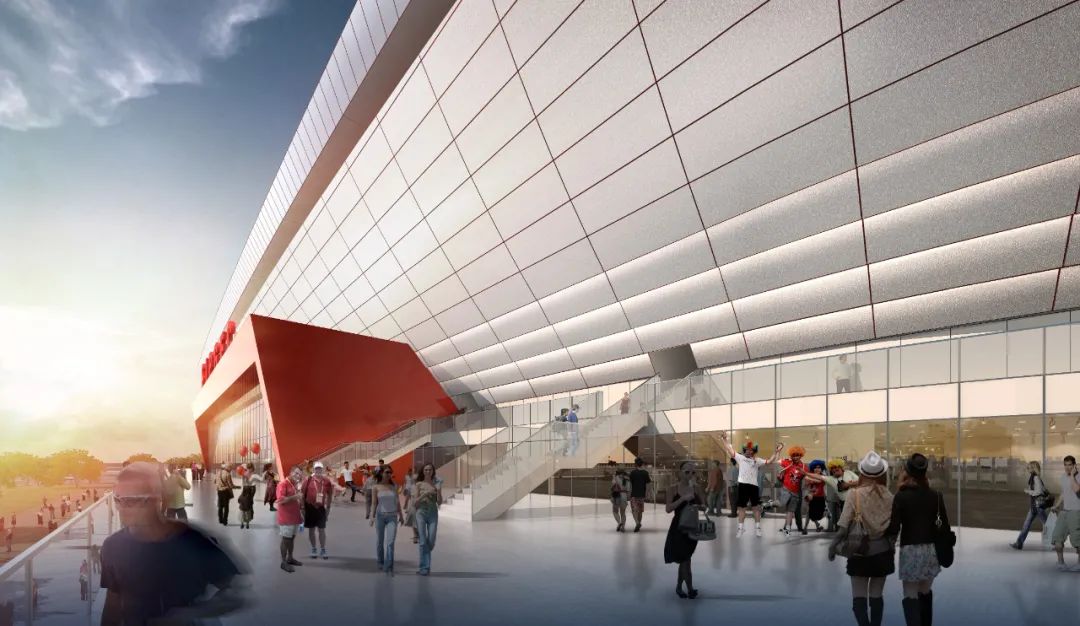
上海浦东足球场 ©HPP
We noticed HPP has already had two sports stadium-related projects in Shanghai, and HPP has a quite lot of experience to design such types of projects in Europe. In your experiences, what are the different needs and expectations that are unique to the Chinese project? And how does HPP handle these unique challenges?
J:Yes. If we talk about the sports stadium soccer arena specifically, we have served around 10 of the main soccer clubs in Germany and Poland. Soccer clubs have a long story. They start maybe in a very simple way. And they build over decades larger and larger stadiums. A stadium is an organism in Germany.
Few stadiums in Germany are like a unity building in China. Sports stadiums here are quicker built, and sometimes even without a soccer club involved or a soccer club existing, just as a symbol, piece of the stadium. But it sometimes has the problem that there's no decision-maker. So, we need to anticipate, based on our experiences, what are the user’s needs as well as the needs of the city when it later is in full operation. So that is the difference of between investors and owners of the stadium, investor of China may not have a hundred percent related to the soccer operation, therefore we are glad we have enough experience to be the bridge between the anticipated needs and the decision-makers’ vision, in order to make decisions suitable for activities that will happen in a few years later.
█ 在湖南广播电视台节目基地项目中,HPP如何为不断变换搭建拍摄舞台、对空间有不同需求的业主设计一个永久性的建筑空间?表达了怎样的一种设计理念?
J:我们参与设计其实是从2013年就开始了,许多专业人士都知道这是一个耗时极长的建设项目。因为影视业的不断变化,这个项目的设计过程中也一直在变化。比如,未来十年,现场观众数量是项目设计中的不确定因素,因此六个摄影棚需要做好准备,以适应未来未知用户行为和与节目录制的结合方式。这六个摄影空间被设计成非常灵活和简单的方盒形状空间,可以轻松地从摄像人员的一侧进行舞台布局的重新改变和编排。摄影棚的外侧,我们使用基地的独特山坡地形,让访问者可以通过连廊向坡顶走向一个最终的舞台,想象成为“明星”的那个时刻。
这是一个为访问者定制的整个建筑连续性体验的过程。如何在不影响专业节目制作的前提下,使该建筑物成为访问电视制作的参观对象,这成为设计的关键。在整个建筑中,人们可以一目了然地窥探电视节目的制作过程。或许他们一开始是游客,作为旁观者观察节目制作的过程,之后有机会成为观众,成为节目的一部分,最后有机会成为制作基地的“明星”。这一系列的经历,便是我们希望能带给参观者最深刻的感受。
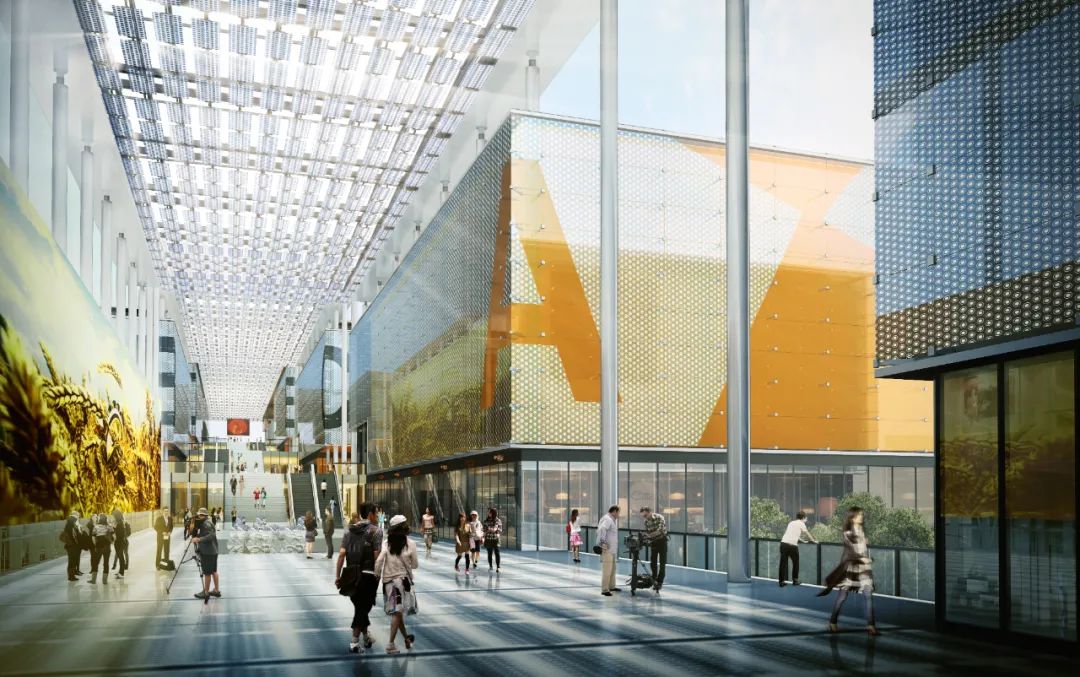
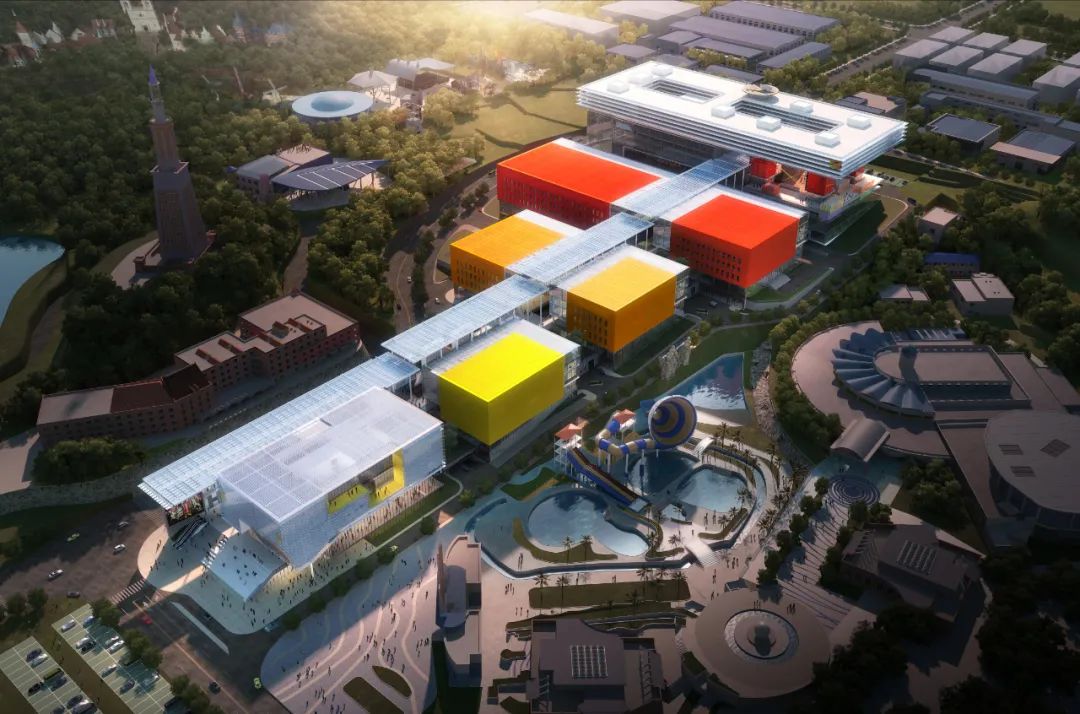
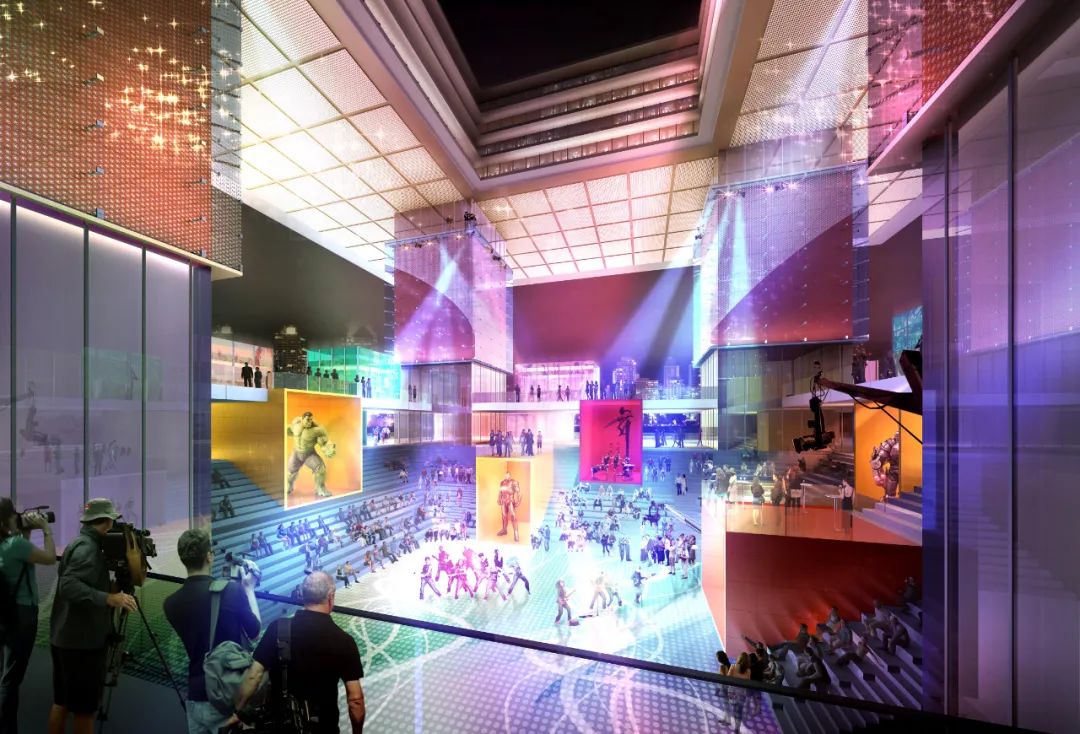
湖南广播电视台节目基地 ©HPP
We are particularly interested in your recent work for the Hunan Broadcasting System TV Program production headquarters. What kind of challenges you may have been experienced in designing a permanent architecture for users that will constantly construct impermanent show stages that will always have different space needs? Are there any differences from typical architectural design? What kind of concept and architects’ understanding does HPP want to express throughout its design?
J: It's a long story. Many people involved with professional input knew this would be a long project under construction. We knew it will always be a changing project because TV production is changing. Every few years involvement of spectators, the integration of the audience is an uncertain factor 10 years ahead. The six sound stages need to be ready to adapt to future user behavior, future integration. So, they are designed as very flexible cubes that are easy to be changed and to be organized from the backside stage. On the outside, the observer, the visitors will have notable access to the inside of this project, by using the topography of the site, it let the visitor travel along a ceremonial way uphill to a final stage where they may imagine like movie stars themselves for a moment.
That is a constructed experience for visitors to enter the building. And there's a very definite sequential experience. The key is that this building is made to be visited on the television production without disturbing the profession to the production. So, people have a glimpse into the production , looking at the famous stars from the observer's point of view and being a star for a moment. This is the experience that why we gave the space a relatively simple and easy, understandable, and easy organizable way uphill to a ceremony of the plaza at the end.
█ 在这个项目中,是否想要通过建筑的外形和布局来表达某种理念?例如方盒子的造型,逐渐迎坡上升的总体布局?
J:是的,走上山坡的行为设计尊重攀爬山丘的现实路线,通过一种礼仪性和尊重性的方式到达目的地。就情感而言,一般都认为最高点拥有最佳视野。这就是我们用故事进行分析的地方。因此,并没有真正的建筑技巧,只不过是以最直接的方式最大化利用和分析场地。
Is there a certain idea or concept that wants to express through the form of this architecture, like the cube and the transaction of a building raising through the hill?
J: Yes, this is respecting the pure reality of a smooth hill that is easy to climb. Walking up hills is a very ceremonial and respectful way to approach a destination to reach physically. The highest point of emotion owns the best view. We would utilize it in a relatively direct way. So there's not an architecture trick.
█ 在中国进行实践的外国咨询公司需要与当地的设计院合作,HPP是如何与他们合作并确保项目执行的完整性和控制力?
J:中国有自己招标的规则,我们别无选择。像我们这样的外资公司,设计范围包含概念、部分深化和扩初设计过程。这之后在很大程度上取决于合同服务内容。通常,我们与当地的设计院合作,保证项目质量,互利共赢。
As the foreign consults doing practice in China, because of certain limitations, they often have to work with a local design agent. Does HPP do that? And how do you collaborate with them and ensure the integrity and control of the private project execution?
J: There is no choice. There are the rules of Chinese tendering. The foreign design companies are limited to the concept and partly development design. After the design process, it depends very much on the contract situation. We cooperate with a local design institute. We like that and depend on each other.
█ HPP是否有机会在项目进程中被业主授予更高的领导力和话语权,从而更好的掌控施工质量和最终成果?
J:我们曾经与一些在中国建设项目的德国业主合作,他们确切地知道自己在建造阶段以及项目品质上需要什么。但在中国情况有所不同,业主在建造阶段及品质把控方面的现场服务似乎具有更强烈的需求,他们也更愿意签订这些阶段的合同。那些离我们办公室非常近的业主,例如在上海,深圳或北京,我们可以更快速为业主提供现场服务。因此,这实际上更易于控制项目的质量。
Have you had the opportunity that you might be able to be hired by clients at a higher level of supervision with a voice or has some leadership, more realistic, and practical leadership that can oversee the construction quality?
J: We have done it for German clients in Shanghai. The German clients who know exactly what they will get from us and what they need during construction and quality decisions. So they contracted us for these phases more intensively. Clients who are located close to our office, for example, in Shanghai or Shenzhen, or Beijing, where it is realistic that we are going every day to the sites giving everyday service. So, this is easier to control the quality of a project.
03
演讲主题及展会看法
CHINA ARCHITECTURAL DESIGN EXPO 2020
█ 此次大会中,数字化设计现在是比较热门的话题,它通过技术手段来做更精细化控制,HPP在德国有专门的BIM设计团队和相关案例实践,目前BIM技术在项目实践中能起到什么作用?
J:在中国,BIM这个话题风头正盛,就像十年前的德国,每个人都在谈论它。事实上在进行BIM项目时,业主不仅要求设计方拥有BIM技术,还要求具有BIM经验。HPP德国目前正在使用新技术进行更多项目的实践。我们从德国经验丰富的同事那里获得了最直接的分享,未来会将HPP的技术标准引入中国的设计团队。
Digital design is a hot topic now. It can be controlled more precisely through technical mode. We know that HPP has a dedicated BIM design team and relevant projects practice in Germany. How do they help in project practice by BIM Technology at present?
J:In China, this is a topic that is about to rise. And it also is coming into our office. We have the first teaching lessons from our more sophisticated colleagues in Germany bring in the HPP BIM standard into teams that are curious and engaged in making BIM projects in China. It's a similar situation like ten years ago in Germany that everybody was talking about BIM. HPP Germany already decided to do more projects with the new technology.
█ 在业主可能都不理解甚至没有意识到BIM的意义时,它是如何帮助设计团队在许多方面实现效率与价值?
J:但是未来他们(业主)也许会的。时代发展的趋势如同一艘前进的大船,你无法阻挡它,但需要大家一起协同才能更好的前进。如果有船员在关键岗位上无法适应,会影响效率,甚至会成为前进的障碍。在面对新技术新事物时,需要每个相关领域的成员都遵循相同的规则和同样的纪律,才能顺利前行。当然,技术应用需要一个长期的适应过程,也需要我们对参与其中的成员保有一定的耐心和教导。
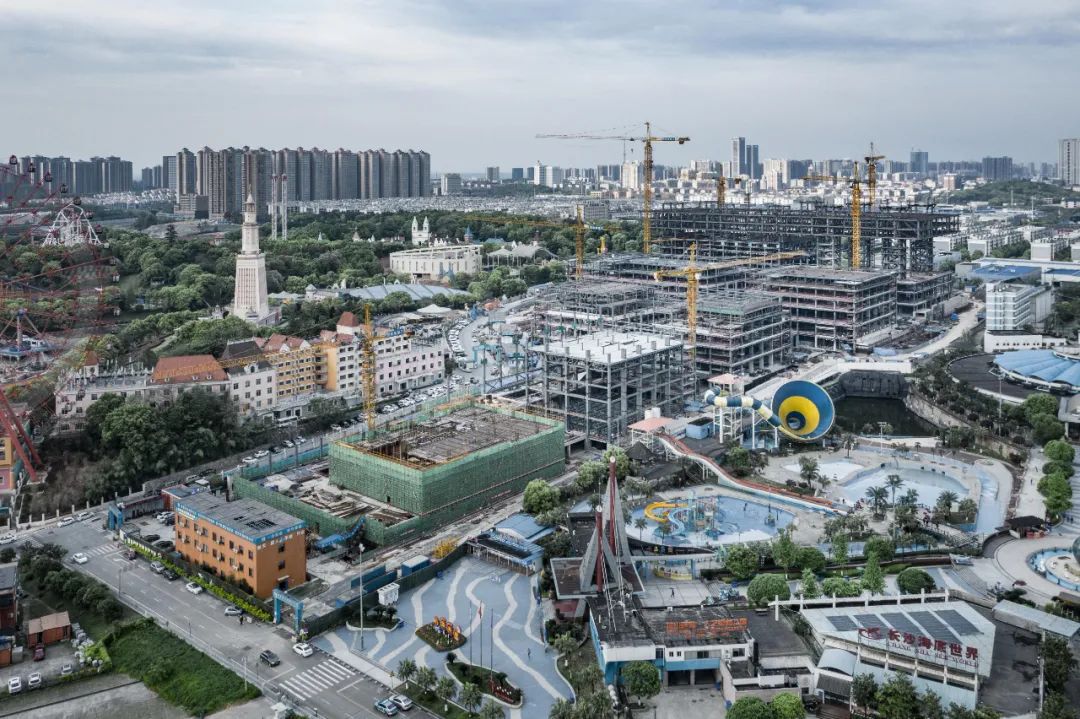
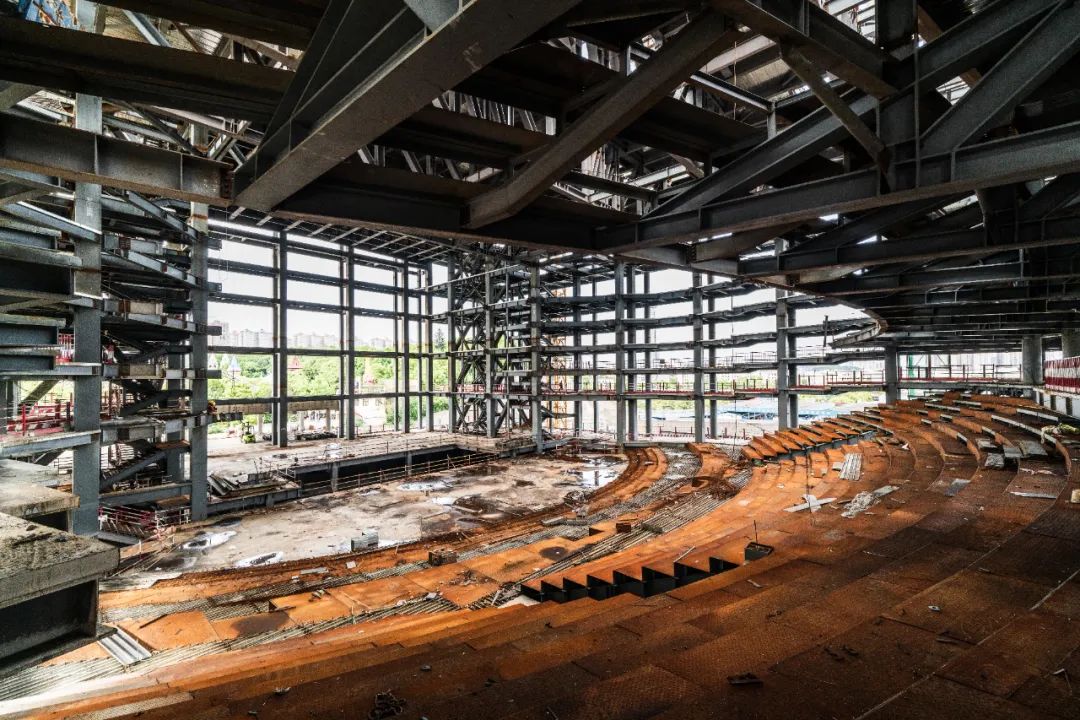
湖南广播电视台节目基地 在建照片,摄影:Andy Ren
How does it help you for more help your team found it more efficient or helpful in many ways? Even clients, probably Chinese clients, as you say, don't want it or don't understand or even realize you're doing now.
J: But they will. And all members, from the client to architect to the construction company, may need it in the future. This is a fragile point, is the bottleneck if one of the groups of planners is not jumping on that train together with the others, this will make the whole process much less efficient, less beneficial as it could be if consequently, every plan needs to follow the same rules, the same discipline. There's a transition time, so they have to go through this episode and educate, teach, or be generous with the other not hundred percent participating team members.
█ 如何看待程序和人工智能辅助建筑设计的趋势?它如何更好的与建筑师的专业实践结合?
J:我们的团队对未来的设计趋势充满好奇,但我们也很实际,乐于为现实而设计建造。人机界面一直需要被关注和完善。在我看来,仅凭计算机生成是不够的。这种抽象的东西需要融入我们的生活中,以一种复杂的方式将现实的地形、能力转化为复杂的形状。该界面的弱点是仅由人创造,受限于人的才能。即使有了更好的科技手段,我仍然相信设计过程中的某些人为因素很难真正被计算机或机器取代。
What do you think of the trend of design-oriented software and artificial intellectual helping design? And do you see it has certain practical values and could sometimes be integrated with our perfect professional practice?
J:Our team, myself, we are curious about it. But we are also realistic and we enjoy building for reality. And there will always be the interface, the human interface, that also needs to be cared about and perfect. From my point of view, it's not enough that we have a computer-generated plan. This abstract thing also needs to be integrated into our lives. It must be in a sophisticated way transformed from the reality of terrain, the reality of ability, into a complex shape. So this interface is also the weak point because this interface is made just by humans. And it depends on the talents of these humans. And with the interface, I would grate certain human elements in the design process can't really be replaced yet by computers or machines.
█ HPP 已经是第二次参与到CADE 建筑设计博览会了,对今年HPP 参与到CADE 建筑设计博览会,有什么样的期待?
J:我希望有更多互动交流,因为这对于演讲者来说是一件有趣的事情。要求你必须做好准备,有足够的知识积累和智慧, 构建自己的知识体系来应对各种各样的问题。但是好在这一切都将发生在演讲之后。
This is the 2nd time HPP participated in CADE,what are the impression and expectations for participating in the CADE2020?
J:I'm very curious about the exchange. I hope that there will be many questions been put forward because this is an interesting thing for somebody who goes to the stage. You have to prepare yourself, accumulate knowledge, and filter your wisdom, structure, and your input. But the nice thing is it happens after the presentation in dialogue.
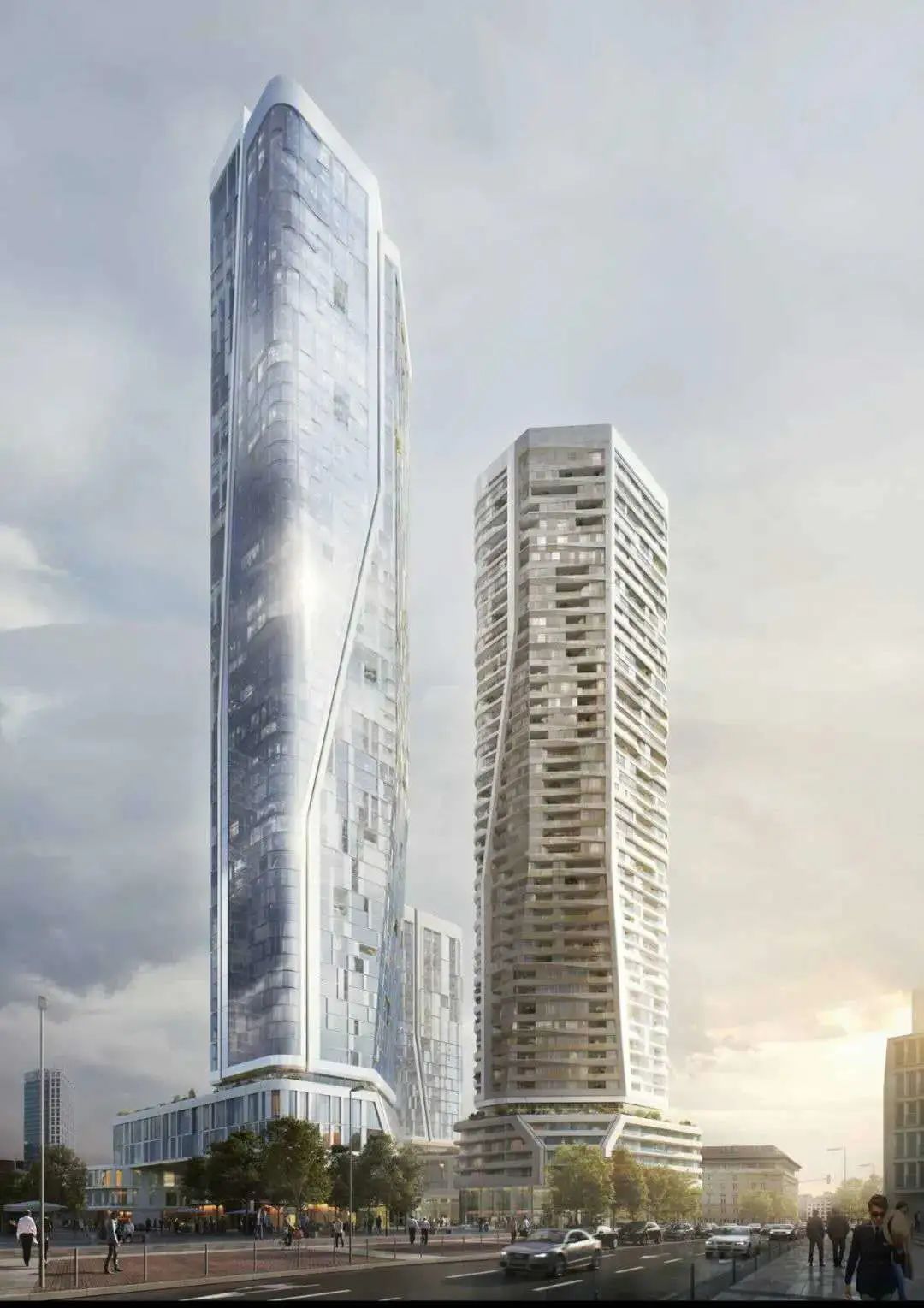
制高点达228米的全能综合体 ©HPP
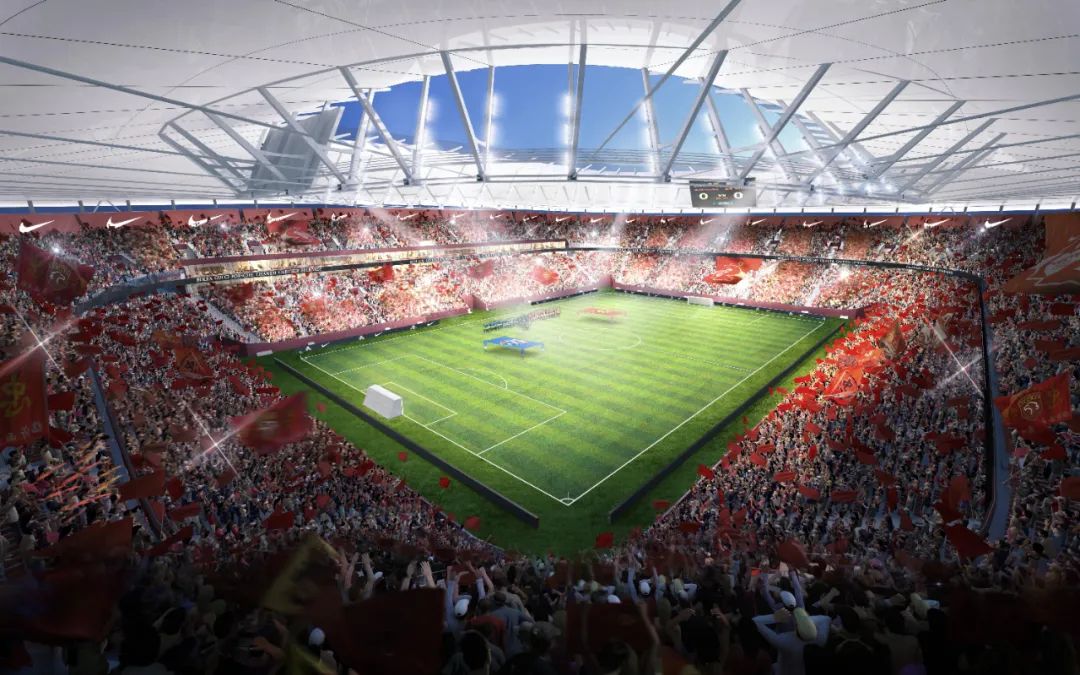
上海浦东足球场 ©HPP

浦东足球场在建照片,摄影师 张虔希
█ 作为BCC 国际建筑科技大会的演讲嘉宾,您将与大家分享什么主题?
J:主题叫“复杂性设计”。我们将展示法兰克福全能城市综合体以及浦东足球场等项目,并在数字设计和复杂功能设计方面分享我们的实践经验。
As a speaker of BAU Congress China 2020,what topics will you share with the audience?
J:It is called “complexity” design. We might show about FOUR Frankfurt and Pudong Soccer Arena that is still under construction. We will share our experience from the complex projects in terms of digital design and complex feature design.
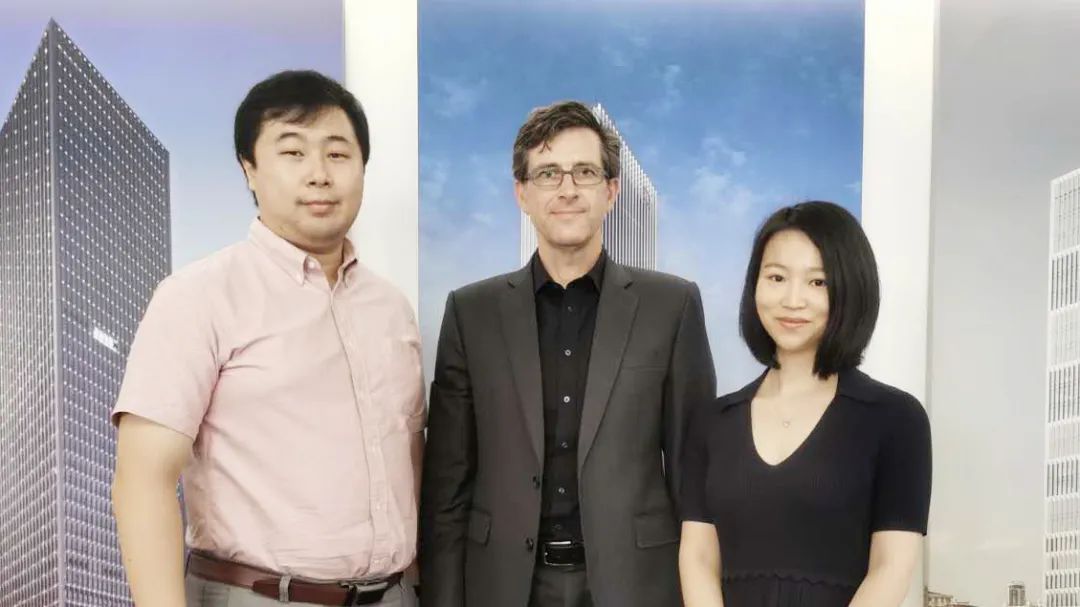
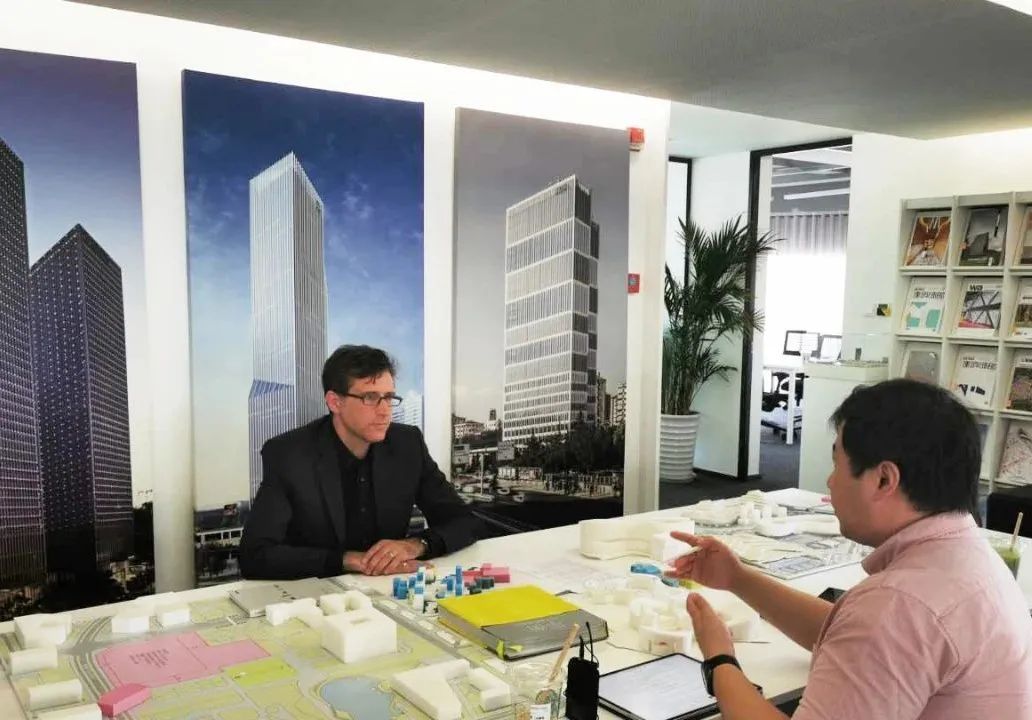
ArchiDogs采访编辑与Jens
访谈|Joya Deng,Jason Yu
文案|Chaoyue Zhang
编辑|Yannie, Yuxin
主编|Sherry Li
审核编辑|Yibo
版权©建道筑格ArchiDogs,转载请联系media@archidogs.com
若有涉及任何版权问题,请联系media@archidogs.com,我们将尽快妥善处理。

